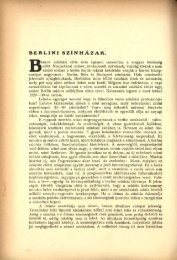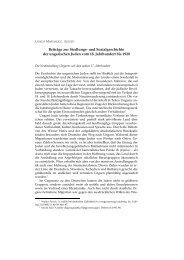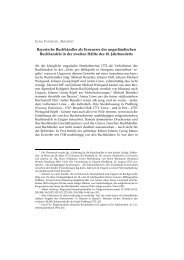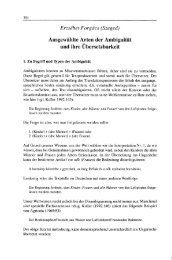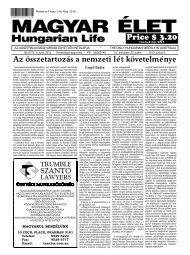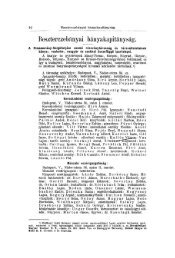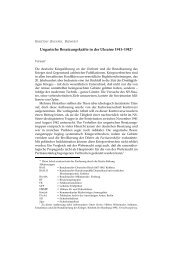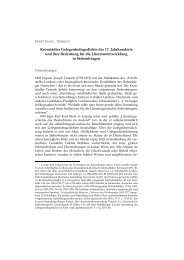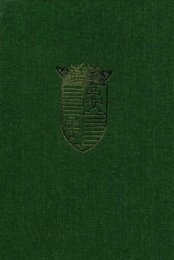Journal of Eurasian Studies - EPA
Journal of Eurasian Studies - EPA
Journal of Eurasian Studies - EPA
Create successful ePaper yourself
Turn your PDF publications into a flip-book with our unique Google optimized e-Paper software.
April‐June 2010 JOURNAL OF EURASIAN STUDIES Volume II., Issue 2.<br />
_____________________________________________________________________________________<br />
stenography. The decipherment took Pálma Schenken twenty years <strong>of</strong> work and the manuscript is<br />
extremely hard to read. The travel diary gives a good impression <strong>of</strong> what Count Zichy and his team were<br />
doing in the Caucasus. (…)<br />
In the Caucasus<br />
The expedition to the Caucasus started on April 30, 1895, leaving from Budapest, and ended on August<br />
14 <strong>of</strong> the same year, when the Russian‐Austrian border was crossed. The members <strong>of</strong> the expedition had<br />
to prepare in advance, bringing tents, summer and winter clothes, weapons, ammunition, equipment for<br />
horse‐riding and mountaineering, a minimum <strong>of</strong> food, photography equipment, phonographs, maps,<br />
books, medical supplies and so on. Within three and half months, they had travelled 20.000 kilometres by<br />
train, boat, horse farm‐wagons, horse and camel. Count Zichy and his men wandered through deserts,<br />
over mountain tops several thousand metres high, and they visited cities and camps <strong>of</strong> ethnic Turkish<br />
nomads. They had to deal with different weather conditions like storms, rain, hail‐stones and the<br />
expedition members had to stand the heat <strong>of</strong> 40 degrees Celsius. The travellers visited all the territories <strong>of</strong><br />
the Caucasus, including Adyge, Circassia, Kabardino, North Ossetia, Ingushia, Chechnya, Dagestan,<br />
Abkhazia, South Ossetia, Adzharia, Georgia and Azerbaijan. In all these territories, they stayed overnight<br />
in villages and towns. 19 Count Zichy and his research team met with a lot <strong>of</strong> different Caucasian people<br />
and tribes, speaking different languages, like Adyghe, Abkhaz, Chechen, Avar, Georgian, Mingrelian,<br />
Karatsjaj, Circassian, Lezgic and so on. They took part in interesting meetings, festivities, celebrations,<br />
rituals and dinners with princes. Count Zichy and his men kept their supporters and families informed by<br />
letters and articles for Hungarian newspapers. Bálint de Szentkatolna claimed that each <strong>of</strong> the expedition<br />
members was left with his own branch <strong>of</strong> sciences ‘because there was complete freedom <strong>of</strong> study.’ This<br />
freedom <strong>of</strong> study was however interpreted completely differently by the leader <strong>of</strong> the expedition. In a<br />
letter from Odessa dated May, 10 1895, Count Zichy wrote: Szádeczky and Bálint are <strong>of</strong> no use to me, they<br />
are spending the whole day in the libraries. Csellingarian has picked up an ancient Russian with whom<br />
he is playing chess all day. Only Wosinszky is doing the research with me.’ 20 (…)<br />
The last important visit the Zichy‐expedition made was to St. Petersburg, where Count Zichy and his<br />
team arrived on August 2 and where they would stay until August 11. On August 6, the expedition<br />
members met a relative <strong>of</strong> Count Jenő Zichy, Count Mihály Zichy, the famous Hungarian painter, who<br />
was appointed as a court painter in St. Petersburg in 1847. Mihály Zichy was also highly honoured in<br />
Georgia, because he painted illustrations for ‘The Knight in the Panther’s Skin’, the Georgian national epic<br />
poem, written by the Georgian poet, Shota Rustaveli, in the twelfth century. Only Count Jenő Zichy was<br />
allowed to have an audience with Czar Nicolas II, who wanted to know everything about the expedition,<br />
asking Zichy whether they had found the Hungarians the researchers had been looking for. 21 (…)<br />
19 See the map in Szadéczky‐Kardoss (2000, 240).<br />
20 Szádeczky‐Kardoss (2000, 241).<br />
21 Szádeczky‐Kardoss (2000, 238).<br />
_____________________________________________________________________________________<br />
© Copyright Mikes International 2001‐2010 90


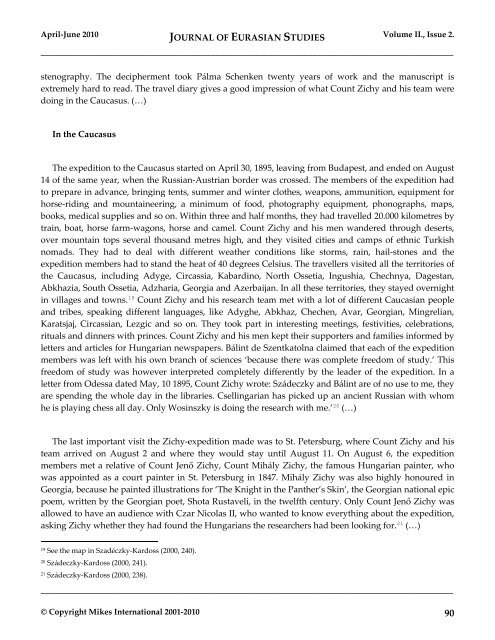
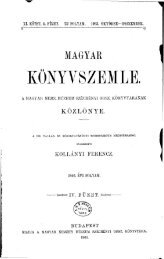
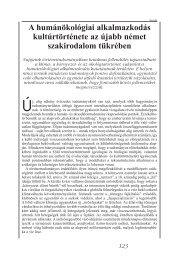
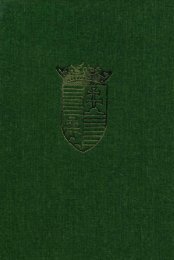
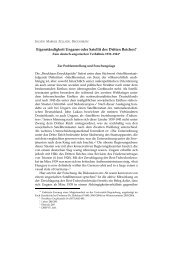
![Letöltés egy fájlban [36.8 MB - PDF] - EPA](https://img.yumpu.com/23369116/1/172x260/letoltes-egy-fajlban-368-mb-pdf-epa.jpg?quality=85)
